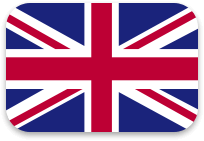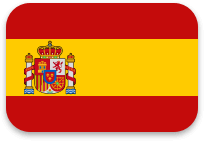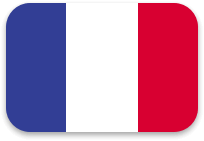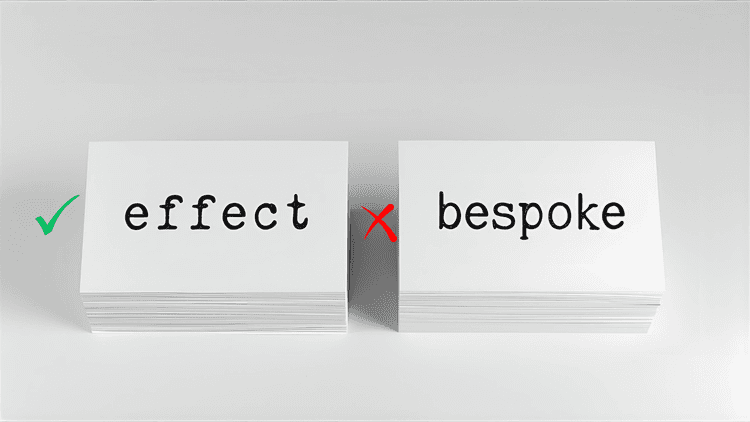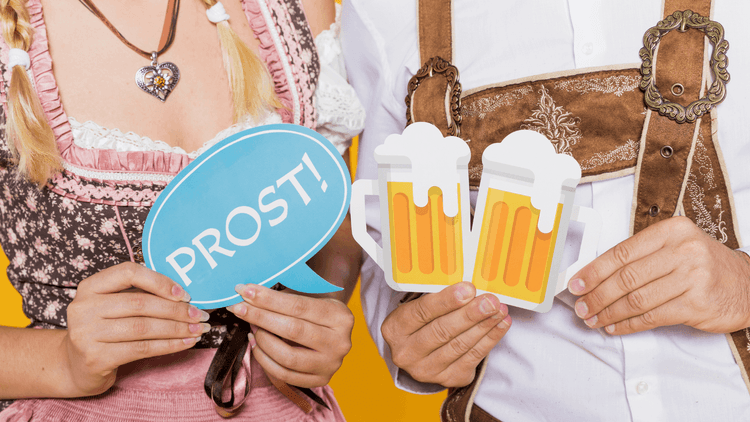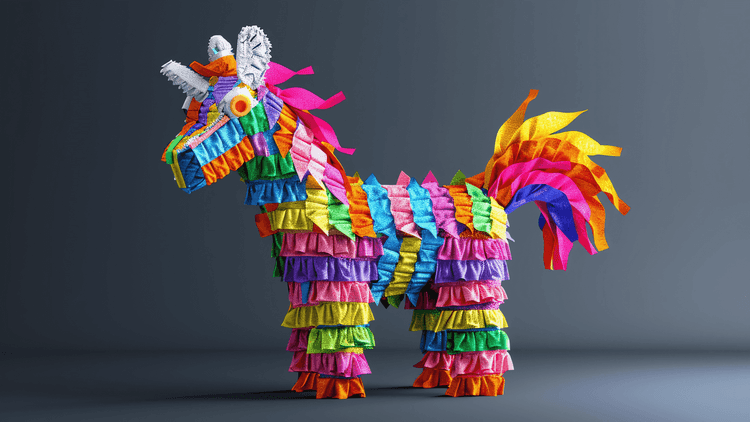Halloween season spans the entire month of October every year. Do you ever think about the significance of spooky costumes and the holiday's origins? Of course, there must be more to the holiday than sweet treats and Jack-o'-lanterns. Where do these traditions come from? Is Halloween Christian or pagan at its core? Why do we wear decorations and ask for treats? Let's embark on a journey from Celtic traditions to contemporary traditions.
What Is Halloween?
Halloween is one of the most essential American celebrations. Although it's not a public holiday, Halloween is highly celebrated across all states. The term comes from "All Hallows' Eve." It refers to the evening before All Saints' Day, celebrated on November 1st. "Hallow" stands for a "holy person," or "saint," and "eve" is the evening before a major holiday. The name contracted in Scottish to "Hallowe'en," which then evolved into "Halloween," the version we use to this day.
Halloween plays an important role in the American economy, with spending per person rising every year. According to a National Retail Federation survey, consumers allocate most of their budget to candy, followed by decorations, costumes, and finally greeting cards.
The spookiest holiday on the American calendar stimulates creativity and displays impressive decorations. From scary themes to haunted houses, Halloween is beloved for the adrenaline. The traditional props and costumes of ghosts, witches, and monsters evoke fear, excitement, and entertainment. A sense of mild, playful mischief is also associated with the holiday.
Halloween is one of the most beloved American holidays, widely celebrated in Europe as well, marking the beginning of the holiday season.
How Is Halloween Celebrated?
There are two main activities people enjoy during the Halloween season: the preparation stage and the festivities themselves. Getting ready for Halloween can be just as exciting as celebrating.
The preparation stage includes choosing costumes and decorating. Popular outfit choices span from vampires and witches to ghosts and popular culture. Pumpkin carving to make jack-o'-lanterns is often a family activity. While some people prefer handmade decorations, such as spider webs and spooky desserts, most get store-bought items to create an eerie atmosphere. Common decor elements include black cats, skeletons, and other symbols. Americans decorate offices, houses, and even streets. Local businesses also put up decorations for Halloween.
What do people do on Halloween? Children put on their costumes and go trick-or-treating from door to door, saying "Trick or treat!" Younger kids start earlier in the day, under their parents' supervision. Grown-ups usually attend costume parties that bring friends, neighbors, and communities together. Traditional party games include bobbing for apples and mummy wrapping, as well as a taste test called "Witch's Brew" and the Ghostly Guessing Game. Playful pranks are part of the fun.
Speak a new language with confidence!
Build fluency faster with FunEasyLearn — just 10 minutes a day is enough to make real progress.
What Are the Origins of Halloween?
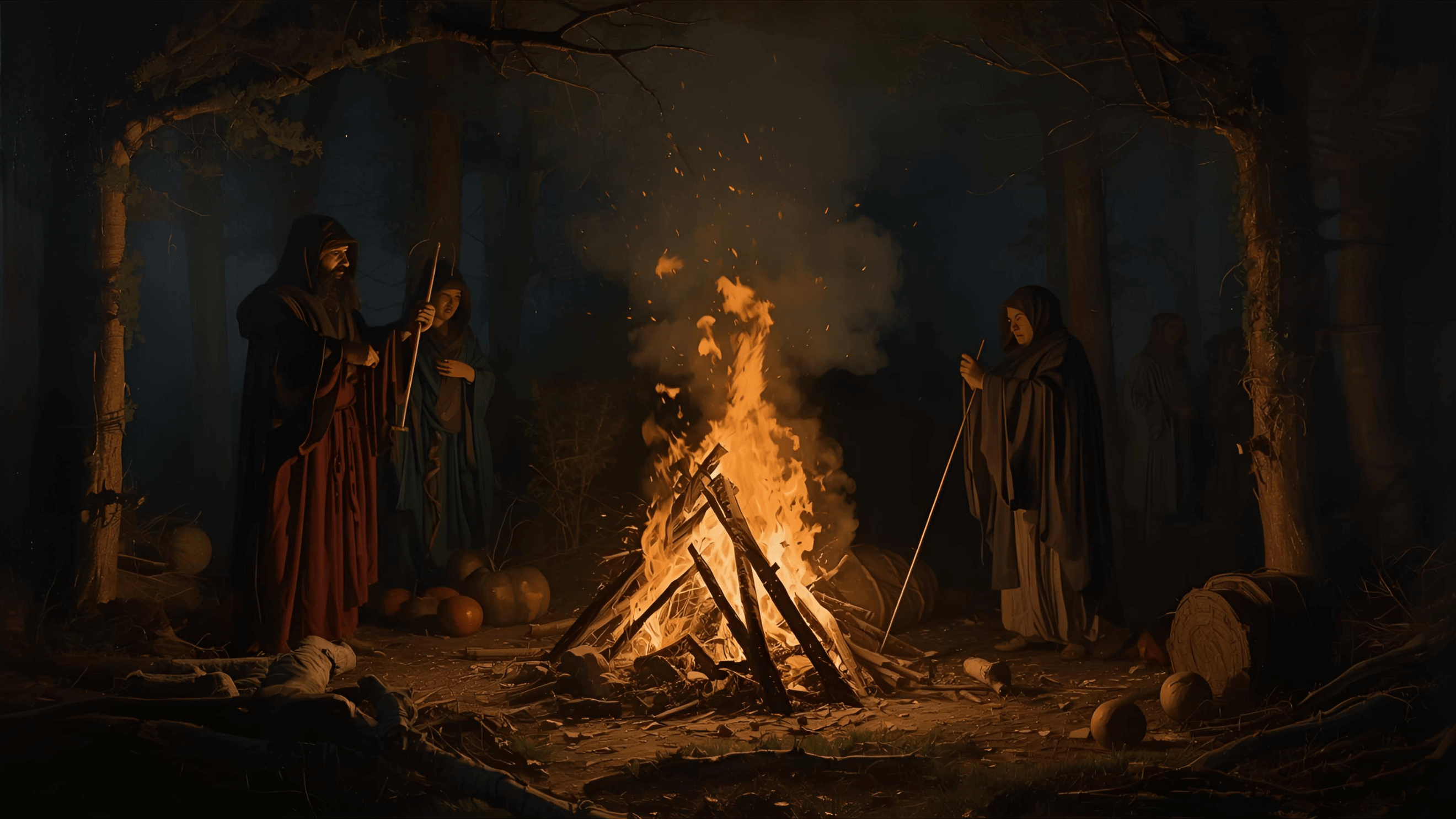
The spooky origins of Halloween go back to the medieval Celtic festival of Samhain. It celebrated the harvest season and the end of the Celtic year. That was considered a time when the border between the world of the living and the dead was thin. After the Romans conquered Celtic territories, they brought their own traditions into Samhain. One example is Feralia, a holiday in which people honored the dead, and another one is Pomona, which celebrated the goddess of fruits and trees on November 1st. That's where the custom of bobbing for apples originated.
Centuries later, the Christian church established November 1st as All Saints' Day and November 2nd as All Souls' Day. The goal was to replace the pagan Celtic traditions with Christian practices. In the Middle Ages, the Catholic Church spread the idea of spirits roaming the realm of the living. So people would wear masks to ward off evil spirits.
The Renaissance revived classical festivals, breathing new life into Halloween with widespread masks, costumes, and street performances. The poor went door-to-door begging for offerings specifically baked for the holiday, called "soul cakes," in exchange for prayers for the deceased.
Early American celebrations define the next notable period on the timeline. European immigrants, predominantly Irish and Scottish, brought with them traditions and customs that blended well with existing American celebrations. Two of the practices were carving turnips and wearing costumes, both of which are indispensable to current celebrations.
The early 19th and 20th centuries made Halloween a more commercial holiday. Mass-produced costumes and decorations entered the market, turning the holiday into a multimillion-dollar industry.
Halloween Vocabulary
Halloween's iconic symbols are well-known worldwide. They weave together Celtic roots, Roman traditions, pagan rituals, and Christian beliefs. Some of the most popular ones are the following:
Apparition - a ghostly figure becoming visible. The word entered English in the early 15th century, in a religious context. At first, it referred only to the appearance of a divine being.
Jack-o'-lantern - a carved pumpkin with a lit candle inside, used as decoration for Halloween. The name comes from the Irish folk tale of "Stingy Jack," a man condemned to wander the Earth with a hollowed-out turnip lit by a coal. Carving vegetables for Samhain was believed to ward off evil spirits. In North America, pumpkins became the vegetable of choice due to their availability.
Trick-or-treat - the action of going from house to house, saying "Trick or treat!" and asking for candy. The custom dates from the medieval practice of the poor offering to pray for the dead in exchange for food. The phrase became popular in the US after World War II.
Vampire - a mythical creature that drinks blood. The most probable origin of the word is Slavic, entering English through German and Hungarian, and popularizing the folklore of the Balkans and Eastern Europe.
Witch - a person believed to have magical powers, usually wearing black clothes and a pointy hat. The witch was a strong symbol of the pagan tradition, central to the Celtic festival of Samhain.
Zombie - A reanimated corpse typically present in horror stories. Zombies originated in Haitian folklore and entered popular culture, becoming a symbol of Halloween.
Grim Reaper - a cloaked skeleton carrying a scythe and personifying death. The Grim Reaper symbol emerged in the 14th century, following the Black Plague. It fits seamlessly into the Halloween theme, hinting at the thin line between the living and the dead.
Master New Languages with FunEasyLearn
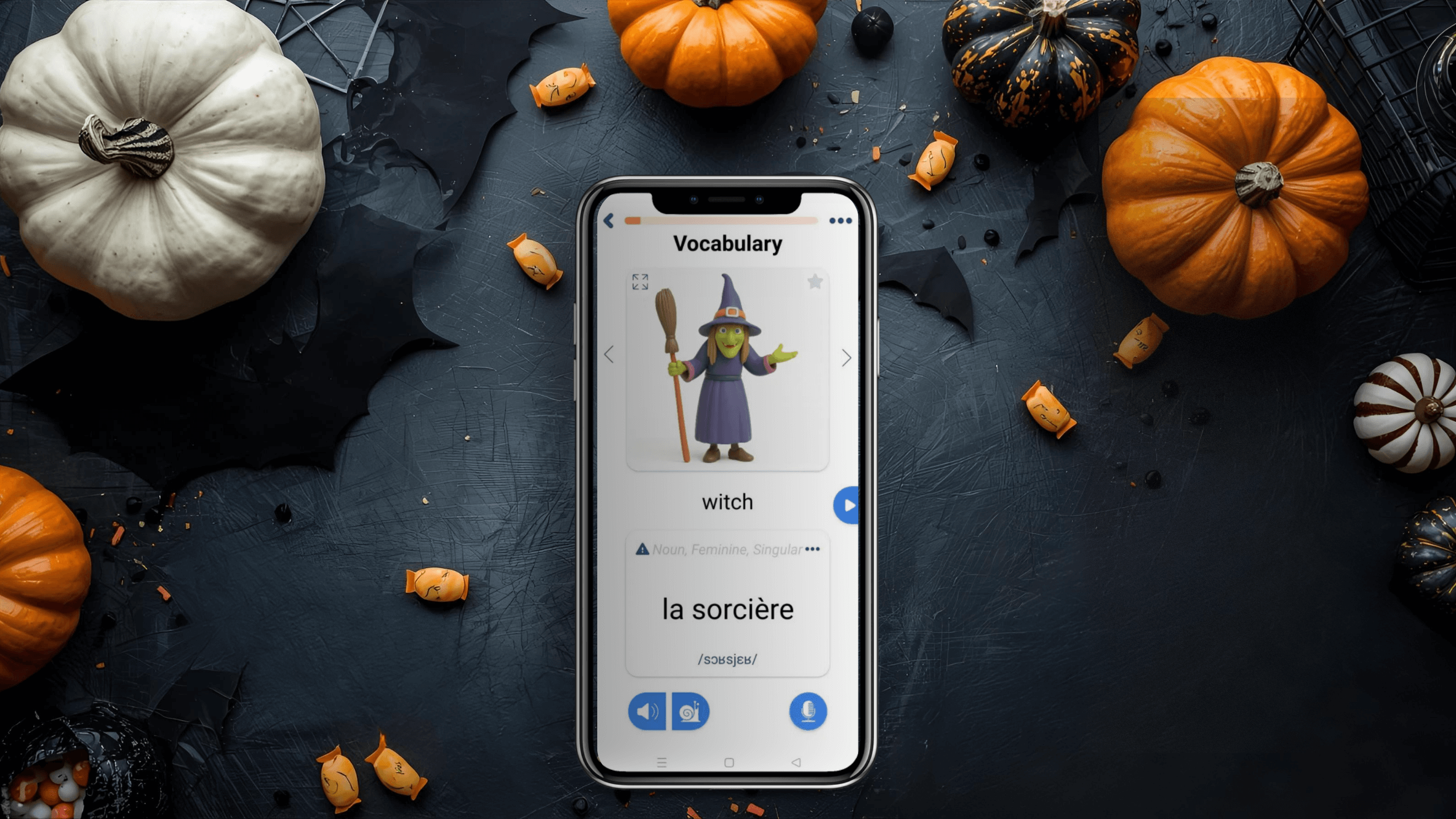
Unlike Halloween decorations, language learning doesn't have to be scary. In fact, your brain works best when it is relaxed. That is one of the reasons gamification works so well in education. On top of that, games are fun, helping prevent boredom and build a learning habit. Playing a few minutes a day thus creates a stress-free environment where you can become fluent.
Three of the most popular PREMIUM features of FunEasyLearn include the following:
⚙️ Review system
Learn smarter, not harder, with a smart review system that calculates the best times to review the vocabulary. The algorithms that improve retention let you review vocabulary less frequently and achieve better results. There is extensive research that proves the effectiveness of spaced repetition in language learning.
🎧 The Hands-free Mode.
Learn on the go while your vocabulary plays in the desired order, native or target first. Set a comfortable pause between the two languages. Decide how many repetitions you want to have. And, most importantly, practice languages when doing chores, waiting in line, commuting, driving, biking, or even jogging. The hands-free feature is perfect for learners with a busy schedule.
⭐ Favorites
Create custom lists of words and sentences to practice. Learners often use this feature to practice for an upcoming test, prepare to interact with native speakers on an upcoming vacation, and in countless other cases. Favorite lists are personalized phrasebooks for specific situations. Learners also use them to practice more challenging vocabulary items. For example, you can put together a list of words you are currently learning and pick the ones that give you a hard time. Another useful functionality is searching through your favorite lists. That way, you can quickly find the right words or sentences when you need them most.
Get scary good at languages!

